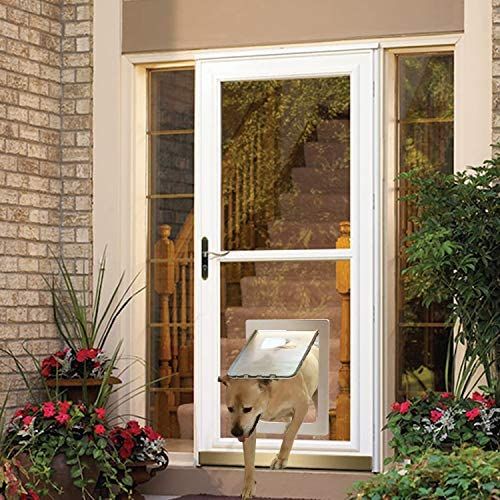Pet screens are a great solution for homeowners in Santee who want to keep their furry friends safe while maintaining proper ventilation in their homes. These durable screens are designed to withstand the wear and tear caused by pets, such as scratching, clawing, and jumping. However, like any other home feature, pet screens require regular maintenance to keep them in good condition after repairs. Here’s a guide on how to maintain your pet screens and extend their lifespan, ensuring they continue to serve their purpose for years to come.
1. Regular Cleaning is Key
One of the easiest and most effective ways to maintain your pet screens is by cleaning them regularly. Over time, dirt, dust, pet hair, and debris can accumulate on the screen mesh, obstructing airflow and making it harder for your pets to see through. Cleaning the screens not only helps keep them functional but also enhances their appearance.
- How to Clean Pet Screens:
Start by using a soft brush or a vacuum cleaner with a brush attachment to remove loose dirt and debris. For a deeper clean, mix mild soap with water and use a soft cloth or sponge to wipe down the screen. Avoid using harsh chemicals, as they can damage the mesh material. After cleaning, rinse the screen thoroughly with water and allow it to dry completely before reinstalling.
2. Inspect for Damage Regularly
Even though pet screens are designed to be more durable than regular window screens, they can still get damaged over time, especially if your pets are very active. Regular inspections help catch small issues before they turn into bigger problems.
- What to Look For:
Check for any holes, tears, or stretched areas in the mesh. Also, inspect the frame for signs of wear or warping. If you notice any damage, it’s important to repair it immediately to prevent further harm. Pet screens that are torn or compromised can allow pests to enter your home or reduce the effectiveness of your screen.
3. Keep Pets Away from the Screens When Not in Use
While pet screens are designed to be more resistant to scratching and tearing, they still need protection from excessive force. If your pets tend to scratch at the screen when they’re excited or trying to get outside, consider using barriers or training them to avoid the windows.
- Training Tips:
Reinforce positive behavior by rewarding your pets when they stay away from the screens. You can also use window film or decals on the lower part of the window to discourage them from scratching the screen. Keeping the area around your windows free from pet distractions can help prevent unnecessary damage.
4. Re-tighten the Screen Frame
Over time, the frame holding your pet screen in place may loosen, especially if the screen has been removed and reinstalled multiple times. A loose frame can lead to gaps, making it easier for pests to get inside. It’s important to check the frame periodically and re-tighten any screws or fasteners that may have become loose.
- How to Tighten the Frame:
Use a screwdriver to tighten the screws or bolts around the frame. Be careful not to overtighten, as this can damage the frame or screen material. If the frame is warped or damaged, it may be time to replace it to ensure the screen remains secure.
5. Avoid Excessive Pressure or Force
Pet screens are designed to withstand the pressure and scratching of pets, but they still need to be treated with care. Avoid applying excessive force to the screen, such as pushing or pulling on it to close a window or door. This can cause the mesh to stretch or tear.
- Proper Handling:
When opening or closing windows or doors with pet screens, do so gently. If you need to remove the screen for cleaning or repairs, carefully lift it out of the frame without putting unnecessary pressure on the mesh.
6. Consider Seasonal Maintenance
In Santee, the climate can vary throughout the year, with hot summers and mild winters. Seasonal maintenance is important to ensure your pet screens stay in good condition year-round.
- Summer Maintenance:
During the warmer months, your pet screens may experience more wear due to increased use and exposure to heat and sun. Check for UV damage, as prolonged sun exposure can weaken the mesh. - Winter Maintenance:
In cooler months, it’s a good idea to inspect the screens for any damage caused by storms or wind. If necessary, cover the screens to protect them from harsh weather.
7. Professional Maintenance and Repair
While regular maintenance can extend the life of your pet screens, it’s also important to schedule professional inspections and repairs. A window screen specialist in Santee can identify any issues you might have missed and perform repairs or replacements as needed.
- Why Hire a Professional:
A professional can ensure that your pet screens are properly installed, tightly fitted, and in optimal condition. If your screens are beyond repair, they can help you choose the best replacement options for your needs.
Call to Action: Expert Pet Screen Repair Services in Santee
Taking care of your pet screens after repair is essential for keeping your home safe, comfortable, and pest-free. If your pet screens need maintenance or repairs, Mobile Speed Screens offers expert pet screen repair in Santee. Our team can help with cleaning, repairs, and replacements to ensure your pet screens are always in top condition.
Contact us today at 760-525-0990 to schedule an appointment and keep your pet screens working like new!

